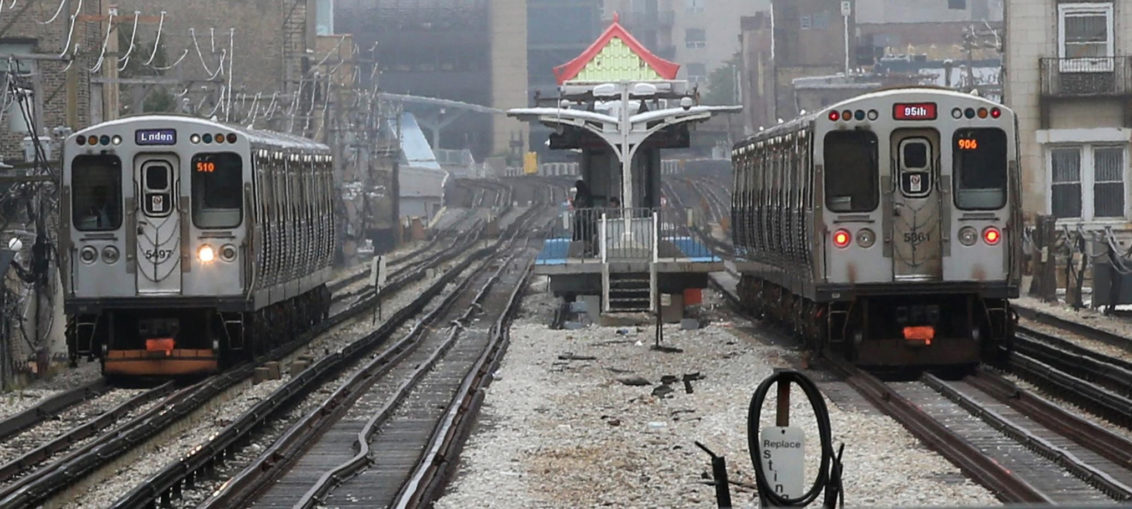
Working-class individuals dwelling within the Chicago space are having hassle paying for public transportation and it’s hurting their capacity to entry work and well being care, in keeping with a report launched Monday.
Aptly titled Fair Fares Chicagoland, the report lays out a sequence of coverage suggestions to CTA, Pace, Metra and the Regional Transportation Authority on the way it could make public transportation extra equitable for these dwelling at or under the federal poverty line.
Active Transportation Alliance surveyed almost 700 individuals throughout the South and West Sides of Chicago and in southern Cook County. The nonprofit advocacy group works to enhance strolling, biking and public transit situations within the Chicago space. Last 12 months, the group launched letter grades for bus companies in the entire metropolis’s 50 wards.
Fair Fares Chicagoland recommends making a 50% decreased transit fare program for residents in Cook, Lake, McHenry, DuPage, Will and Kane counties. The program would profit these dwelling at or under 200% of the federal poverty line.
The report estimates this system would value the CTA, Pace and Metra a mixed $175 million yearly. Meanwhile, the annual financial savings may add as much as $630 for low-income CTA riders; as a lot as $840 for low-income Pace riders; and $1,650 for low-income Metra riders.
“This report has some good ideas, but the challenge as always is finding a way to pay for them,” Metra spokeswoman Meg Thomas-Reile mentioned in a press release.
Thomas-Reile mentioned Metra is engaged on a pilot program that gives decrease fares and transfers for riders on the Metra Electric and Rock Island traces with monetary assist from Cook County.
CTA, Pace and RTA didn’t return requests for remark.
Julia Gerasimenko, a co-author of the report, mentioned she understands the considerations for funding and their aim is to not have companies reduce on account of their coverage strategies.
Gerasimenko believes this program — together with the opposite suggestions outlined — may enhance ridership.
“We see this almost as a stimulus package,” mentioned Gerasimenko. “If we give access to transit, it gives people access to jobs, ability to seek proper health care and even fight segregation in the city.”
About 90% of these surveyed who reported an annual earnings of $25,000 or much less mentioned they’d use the practice or bus extra typically if the associated fee was decrease. More than half mentioned they have been unable to afford a practice or bus fare.
The report requires an enlargement of state subsidies to pay for the suggestions, restructuring of taxes, and asks state legislatures to reassess how experience fares are used for working prices.
Lynda Lopez, a co-author of the report, mentioned one other option to make transit extra equitable is thru a observe often known as “fair-capping,” which might basically cease charging riders as soon as a sure variety of Ventra card swipes are made in a given time interval.
Lopez mentioned individuals from working-class communities who depend on public transit can’t afford to pay the $105 for a 30-day CTA move.
“Let’s say you can’t pay that upfront, so you simply pay as you go,” Lopez mentioned. “What ends up happening is people just pay so much more than that $105 over the 30-day period. It’s like they’re penalized for being poor.”
“It’s expensive being poor, and this is another example of that,” Gerasimenko added.
The report additionally calls without spending a dime fares for youth who qualify without spending a dime or reduced-price lunch applications and asks state legislators and RTA to streamline transfers between CTA, Pace and Metra. It additionally recommends decriminalizing fare evasion.
“People shouldn’t have to go to jail because they didn’t pay a fare,” Lopez mentioned.
Manny Ramos is a corps member in Report for America, a not-for-profit journalism program that goals to bolster Sun-Times protection of points affecting Chicago’s South and West sides.